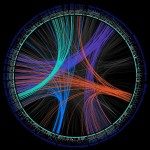Link to Pubmed [PMID] – 24115443
Science 2013 Oct;342(6155):257-61
The processes that shaped modern European mitochondrial DNA (mtDNA) variation remain unclear. The initial peopling by Palaeolithic hunter-gatherers ~42,000 years ago and the immigration of Neolithic farmers into Europe ~8000 years ago appear to have played important roles but do not explain present-day mtDNA diversity. We generated mtDNA profiles of 364 individuals from prehistoric cultures in Central Europe to perform a chronological study, spanning the Early Neolithic to the Early Bronze Age (5500 to 1550 calibrated years before the common era). We used this transect through time to identify four marked shifts in genetic composition during the Neolithic period, revealing a key role for Late Neolithic cultures in shaping modern Central European genetic diversity.

